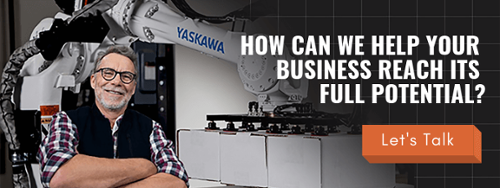How would you know if automation could ease some of your manufacturing frustrations? If you recognize any of the following six conditions, your processes could very likely benefit from a custom automation solution.

1. You have difficulty retaining or hiring qualified employees
Nearly every manufacturer we talk with voices the same frustration: not enough qualified people are available for hire. This makes it challenging or even impossible for them to meet production requirements. As a result, their current employees are overloaded and risk burn-out. Automation equipment can fill the labor shortage gap, easing the burden on employees and increasing their job satisfaction. As Force Design customer Greg C. Boser II of Superior Plastics, Inc. relayed, “Before [implementing automation from] Force Design, we used manual operations and struggled to make 100 assemblies an hour. Now, we are comfortably making 210 an hour. Our operators are less fatigued and enjoy working with the automation.”
2. Processes involve multiple operators and/or multiple shifts
Labor savings are typically realized when a process is automated. The savings become significant when the process involves multiple operators and occurs on multiple shifts. In fact, this is usually the single biggest factor in realizing a quick return on investment. Explore potential automation scenarios for your processes with our Free ROI Calculator.
3. Tasks are potentially hazardous to employees
Many manufacturing operations involve unavoidable hazardous elements: large masses or forces, extreme temperatures, toxic chemicals, production of dirt, dust or fumes. These often require extensive safety equipment and training for human operators. Automated equipment can remove a large amount of risk from employees, making hazardous processes safer and more efficient.
4. Tasks are repetitive, fatiguing, or ergonomically challenging
A thought-provoking comment comes from John Dulchinos, President and CEO of Adept Technology, “The human body … wears out. It was not designed to be a factory machine. It was designed to be a thinking machine.” The human body can only handle so much wear and tear. Processes that require high repetition – or that frequently push the body’s mechanical limits –cause fatigue, burnout or even injury. Automation equipment can successfully handle tiring – often mind-numbing – tasks, which frees employees to focus on value-added tasks or other key responsibilities.
5. Processes require high accuracy, consistency or speed
As we said, the human body has limitations. Modern manufacturing processes often require levels of accuracy, consistency or speed that are difficult or impossible for people to achieve and sustain. Automation equipment, on the other hand, is designed to excel in these areas.
6. Productivity is inconsistent due to labor variabilities
Consistent productivity can be difficult to achieve because of human factors: scheduled and unscheduled time off, differences between various employees performing the same tasks, and even fluctuations in individual employee performance. In contrast, automation equipment works consistently with no need for breaks or time off.
Do you recognize any of the above conditions in your current processes? If so, you might benefit from employing automation. We welcome the opportunity to work with you to create an automation strategy that allows your team to excel.




